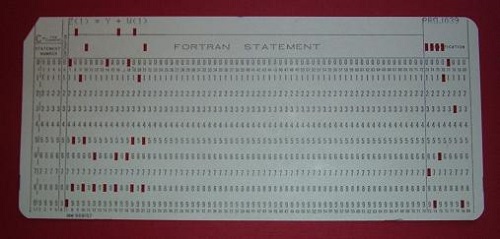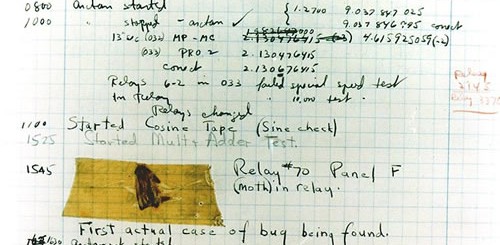Moore's Law illustrated
Message boards :
Number crunching :
Moore's Law illustrated
Message board moderation
| Author | Message |
|---|---|
Richard Haselgrove  Send message Joined: 4 Jul 99 Posts: 14650 Credit: 200,643,578 RAC: 874 
|
Remember Moore's Law? The observation made in 1965 by Gordon Moore, co-founder of Intel, that the number of transistors per square inch on integrated circuits had doubled every year since the integrated circuit was invented. Moore predicted that this trend would continue for the foreseeable future. In subsequent years, the pace slowed down a bit, but data density has doubled approximately every 18 months, and this is the current definition of Moore's Law, which Moore himself has blessed. Most experts, including Moore himself, expect Moore's Law to hold for at least another two decades. (source) Before I put it all back together, I thought I'd illustrate just how true it still is. When I first started working as a freelance computer consultant in 1990, my 'business class' computer was based on a 80286 processor, and used the de-facto standard 30-pin SIMMs: I think my machine took a maximum size of 1 megabyte. I can't find any of those in my parts bin today, but here's the next popular standard - a 4 megabyte 72-pim SIMM.  (that's roughly actual size on my desktop monitor) And below it is the 128 gigabyte SSD supplied with my new machine. I actually did a double-take, and spent some time scratching my head, before I could identify the "hard disk" I wanted to temporarily disable while I installed Windows 10 to a different drive. If we take the 1-MB simm as the starting point, that's a 2^17 increase in memory capacity in 26 years, in a very similar form factor. Wow! |
 Ghan-buri-Ghan Mike Ghan-buri-Ghan Mike Send message Joined: 27 Dec 15 Posts: 123 Credit: 92,602,985 RAC: 172 
|
My first desktop PC (which I bought for grad school) was a Tandy 1000 HX back in 1986 with an 8088 processor.. It had 256 K of RAM, expandable to 640 K. As I recall, the memory expansion card was about the size of a 3" x 5" file card and you had to manually affix the memory chips. It had a 1200 baud modem too, which was 4 times faster than that used by many banks at that time. The communications speeds have since also grown exponentially. |
|
Admiral Gloval Send message Joined: 31 Mar 13 Posts: 20265 Credit: 5,308,449 RAC: 0 
|
I remember the PC/AT. It had 10Mhz processor, 1 megabyte of memory, coprocessor chip, ATI All in Wonder EGA video card, 40 megabyte hard drive, corded laser mouse and a 19 inch monitor. That was a go getter back in 1988. I spent a good many hours in front of that dinosaur. Right now my iPhone has more power than it had.  
|
 BilBg BilBg Send message Joined: 27 May 07 Posts: 3720 Credit: 9,385,827 RAC: 0 
|
"laser mouse" in 1988 ? Â   - ALF - "Find out what you don't do well ..... then don't do it!" :) - ALF - "Find out what you don't do well ..... then don't do it!" :)Â |
|
bluestar Send message Joined: 5 Sep 12 Posts: 7031 Credit: 2,084,789 RAC: 3 |
https://en.wikipedia.org/wiki/Solid-state_drive Also here which shows these things quite well. Also I was looking for a comparison between these ones and what I thought could be SSD's or the like and next be found on the motherboard. If possibly so, it is not being used right now. |
Richard Haselgrove  Send message Joined: 4 Jul 99 Posts: 14650 Credit: 200,643,578 RAC: 874 
|
Looks like the number of interconnection standards is obeying Moore's Law as well... I'm guessing I got an M.2 (NGFF) card. Plugs into an L-shaped connector on the motherboard (push in at a slight angle, press it down to lie flat and parallel to the motherboard, fix with a single retaining screw to a stand-off). Very neat, once you know what you're looking for. |
|
Admiral Gloval Send message Joined: 31 Mar 13 Posts: 20265 Credit: 5,308,449 RAC: 0 
|
"laser mouse" in 1988 ? It was a three button mouse. No scroll wheel. The mouse pad was made out of metal. Had a glossy finish with blue grid lines accross it.  
|
 HAL9000 HAL9000 Send message Joined: 11 Sep 99 Posts: 6534 Credit: 196,805,888 RAC: 57 
|
Looks like the number of interconnection standards is obeying Moore's Law as well... It'd odd now they look nearly like Mini PCIe cards, but with storage moving to a direct PCIe connection I guess it may not be. SETI@home classic workunits: 93,865 CPU time: 863,447 hours  Join the [url=http://tinyurl.com/8y46zvu]BP6/VP6 User Group[ Join the [url=http://tinyurl.com/8y46zvu]BP6/VP6 User Group[
|
 BilBg BilBg Send message Joined: 27 May 07 Posts: 3720 Credit: 9,385,827 RAC: 0 
|
It should have been a ball mouse (they were expensive at the time): https://en.wikipedia.org/wiki/Computer_mouse#Mechanical_mice Not laser mouse: https://en.wikipedia.org/wiki/Optical_mouse#Laser_mice "As early as 1998, Sun Microsystems provided a laser mouse with their Sun SPARCstation servers and workstations. However, laser mice did not enter the mainstream market until 2004, when Paul Machin at Logitech ... introduced its MX 1000 laser mouse" EDIT: I didn't understand the "Had a glossy finish with blue grid lines across it" refers to the pad. So it was probably this "Early optical mice" (LED): https://en.wikipedia.org/wiki/Optical_mouse#Early_optical_mice "infrared LED and a four-quadrant infrared sensor to detect grid lines printed with infrared absorbing ink on a special metallic surface" Â   - ALF - "Find out what you don't do well ..... then don't do it!" :) - ALF - "Find out what you don't do well ..... then don't do it!" :)Â |
Richard Haselgrove  Send message Joined: 4 Jul 99 Posts: 14650 Credit: 200,643,578 RAC: 874 
|
It should have been a ball mouse (they were expensive at the time): I see your edit, but footnote #36 of that Wiki entry had already led me to  (from InfoWorld, May 14 1984) The dates are right, but that doesn't specify the light source used: I agree it's more likely to have been an LED than a laser at that time. |
 HAL9000 HAL9000 Send message Joined: 11 Sep 99 Posts: 6534 Credit: 196,805,888 RAC: 57 
|
It should have been a ball mouse (they were expensive at the time): https://en.wikipedia.org/wiki/Optical_mouse#Early_optical_mice Looks like there were two competing techs. I do recall the version that used a grid in some science museum I went to in the 80's when I was very young. SETI@home classic workunits: 93,865 CPU time: 863,447 hours  Join the [url=http://tinyurl.com/8y46zvu]BP6/VP6 User Group[ Join the [url=http://tinyurl.com/8y46zvu]BP6/VP6 User Group[
|
 janneseti janneseti Send message Joined: 14 Oct 09 Posts: 14106 Credit: 655,366 RAC: 0 
|
"laser mouse" in 1988 ? Yes. Looked like this. At very least a couple of years later.  https://upload.wikimedia.org/wikipedia/commons/e/ea/Sun_optical_mouse.jpg But it was not a laser mouse. Brings back memories to me. |
 tullio tullio Send message Joined: 9 Apr 04 Posts: 8797 Credit: 2,930,782 RAC: 1 
|
This looks like the mouse of my Olivetti AT@T UNIX PC, vintage 1986. It still works. Tullio |
|
Grant (SSSF) Send message Joined: 19 Aug 99 Posts: 13736 Credit: 208,696,464 RAC: 304 
|
"laser mouse" in 1988 ? Look similar to the mouse we had for our XT PC. It used a bus card that plugged in to the XT system and used the stiff blue pad with faint grid lines on it. The big selling point of all the mechanical mice was that you didn't have to use a special pad for them to work. Of course over time, everyone had a mouse pad for their mechanical mouse as they didn't work very well without a pad. By that time the optical mouse had been killed off. Interesting that now all the mice are optical- people got sick of pulling their mechanical mouse apart to clean the crud out of it when it stopped working properly. No need for a mouse pad, or a special pad with a grid on it for the mouse to work these days; although a mouse pad does give you something soft to rest your hand on. Grant Darwin NT |
 janneseti janneseti Send message Joined: 14 Oct 09 Posts: 14106 Credit: 655,366 RAC: 0 
|
I wish that the Moore's Law could also be applied to software developement. There has been many improvements over time but very slowly. What's complicate it more is of course all the so called computer languages that is supposed to solve software developers "problem". |
 Graham Middleton Graham Middleton Send message Joined: 1 Sep 00 Posts: 1520 Credit: 86,815,638 RAC: 0 
|
I wish that the Moore's Law could also be applied to software developement. Of course, all these 'new' S/W languages do, in most cases, solve some problems from older ones. The BIG issue is that they very nearly always introduce a whole raft of new issues and/or limitations to be got round (frequently undocumented ones). Happy Crunching, Graham 
|
 tullio tullio Send message Joined: 9 Apr 04 Posts: 8797 Credit: 2,930,782 RAC: 1 
|
NASA is searching for Assembler and FORTRAN programmers to keep in touch with the Voyager 1 and 2 spacecrafts, since the last of the original programmers has retired at the age of 80 years. Tullio |
 janneseti janneseti Send message Joined: 14 Oct 09 Posts: 14106 Credit: 655,366 RAC: 0 
|
NASA is searching for Assembler and FORTRAN programmers to keep in touch with the Voyager 1 and 2 spacecrafts, since the last of the original programmers has retired at the age of 80 years. Hehe:) FORTRAN statement Z(1) = Y + W(1)  I think FORTRAN is still alive just as COBOL in business machines. |
 Graham Middleton Graham Middleton Send message Joined: 1 Sep 00 Posts: 1520 Credit: 86,815,638 RAC: 0 
|
Good old Fortran I like it... and BASIC, never really got on with COBOL... Happy Crunching, Graham 
|
 janneseti janneseti Send message Joined: 14 Oct 09 Posts: 14106 Credit: 655,366 RAC: 0 
|
And a lot easier to find bugs back then.  |

©2024 University of California
SETI@home and Astropulse are funded by grants from the National Science Foundation, NASA, and donations from SETI@home volunteers. AstroPulse is funded in part by the NSF through grant AST-0307956.